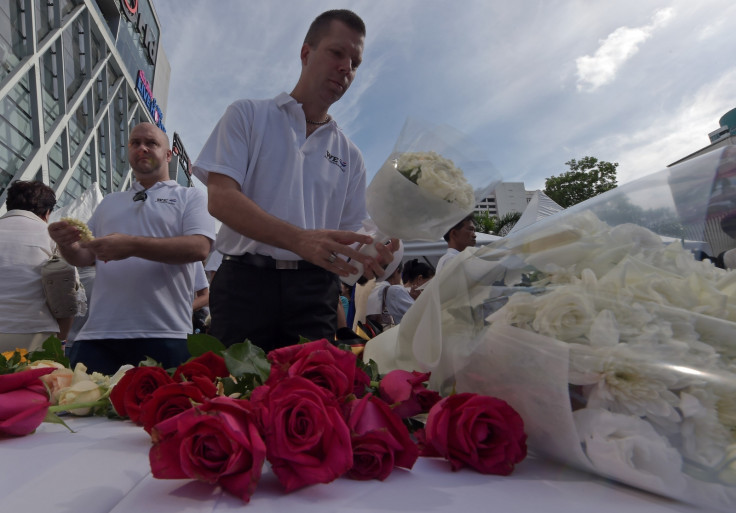Bangkok bombing: Heavily armed Thai police accompany two suspects to reconstruction at blast site

Heavily armed police have staged another reconstruction of the Bangkok bombing at the site of the blast that left 20 dead, including 14 tourists, and 120 injured. Adem Karadag and Yusufu Mierili were dressed in bulletproof vests and escorted by officers, some of whom were masked, with automatic weapons. The reconstruction on 26 September took place at the Erawan Shrine and also at a nearby shopping mall.
The police say they have gathered enough evidence to charge the two suspects with the bombing. They allegedly have incriminating CCTV footage, together with witness statements and DNA traces, to connect the suspects to the scene.
Adem Karadag (left) was caught first & police say he is bomber Yusufu Mieraili (right) was caught near the border pic.twitter.com/xybz9rmYTu
— Richard Barrow (@RichardBarrow) September 26, 2015Police claim Karadag, also known as Bilal Mohammed, was the yellow-shirted suspect seen in CCTV security footage positioning a backpack at the shrine immediately before the blast. During the latest reconstruction, Karadag wore a yellow shirt and was seated on a bench next to the position of the backpack. Meanwhile, in a nearby shopping mall, Mierili, who police allege used a mobile phone to detonate the bomb, was led through another reconstruction process.
Karadag has denied involvement in the attack, stated his lawyer Chuchart Kanphai. "The appearance of the yellow shirt man [ in the CCTV evidence] and Adem do not match. I do not believe Adem would confess," he said.
Nevertheless, National Police Chief Somyot Poomphanmuang said the two men, who are believed to be Turkish nationals, have confessed to the crime. Poomphanmuang claims their motive was revenge, following action by the authorities to break up a people-smuggling gang.
There has been speculation, however, that the bombing might be connected to the repatriation of more than 100 Ughuirs – members of a Muslim group related to Turks. It is believed some Uighurs have links to jihadist groups.
But the investigation has been dogged by controversy, with the police awarding themselves reward money initially offered to the public and also showing a suicide vest in a film clip broadcast on national television, which later turned out to be old footage from a police training film.
© Copyright IBTimes 2025. All rights reserved.



















